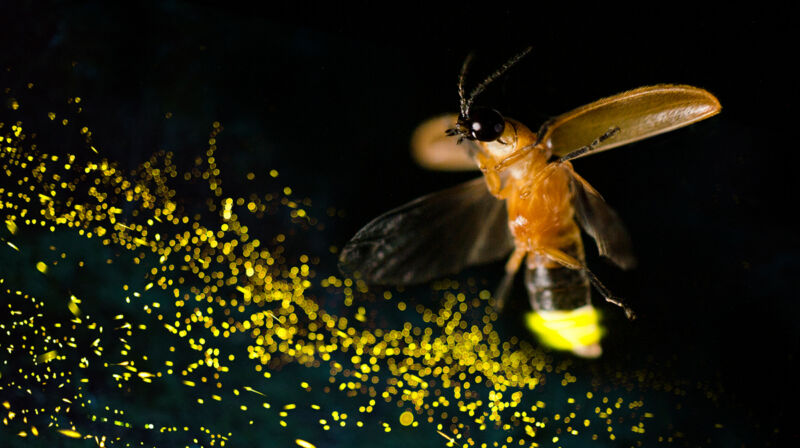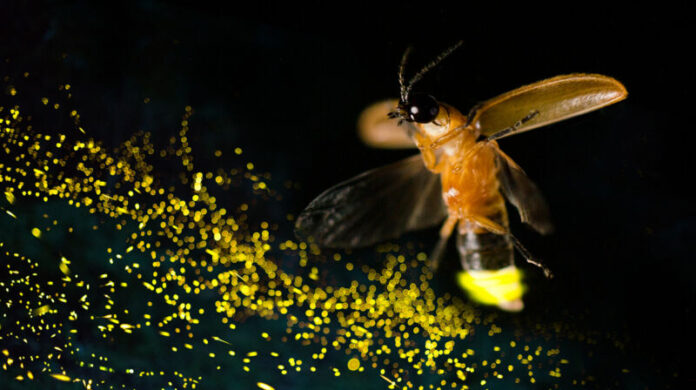
Enlarge (credit: Xinhua Fu)
On one level, we have fireflies figured out. We know the enzyme they use to make light (called luciferase), as well as the chemicals they use in the light-generating reaction. We know them so well that we've turned them into useful tools for studying other aspects of biology, such that lots of people who have never even seen a firefly have used firefly luciferase in the lab.
But on another level, there's a lot we don't understand. Fireflies clearly exercise a level of control over when they light up, and they do so only in specialized organs. And there's nothing like that organ in other species. So, somehow, fireflies evolved an elaborate light-producing organ, and there's no sign of any potential precursors in related species. Which makes it a bit of a mystery.
Now, a pair of researchers from Wuhan, China, (Xinhua Fu and Xinlei Zhu) have started unraveling what's going on at the level of the genes responsible. And, while they haven't produced a complete picture of how evolution built the fireflies, they've brought us a lot closer.
Read 13 remaining paragraphs | Comments
Ars Technica - All contentContinue reading/original-link]




